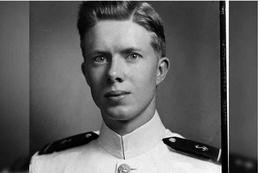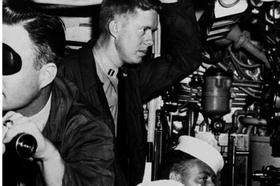Abstract
The core meltdown accident at Three Mile Island in 1979 in the United States was a major challenge to nuclear safety in the scientific community. An accident considered impossible by the specialists had nevertheless occurred, raising fundamental questions such as the understanding of the accident by the operators in the control room, the redundancy of the countermeasures and the efficiency of the equipment under accident conditions. A major plan of measures has been initiated by Western countries with the appearance of probabilistic safety studies and the increased development of defense in depth.
Access this chapter
Tax calculation will be finalised at checkout
Purchases are for personal use only
Notes
- 1.
Mitchell Rogovin (1930–1996). Famous American lawyer from Washington, D.C., government advisor to the IRS between 1964 and 1966, and then attorney general. Very involved in civil rights, he defended the New York Times in the case of the publication of the Pentagon Papers in 1971 and sued Richard Nixon’s re-election committee.
 (photo University of Chicago)
(photo University of Chicago) - 2.
Mitchell Rogovin, George T. Frampton Jr., Three Mile Island: a report to the commissioners and to the public, Nuclear Regulatory Commission special inquiry group, Janvier 1980. To ensure the impartiality of the report, the NRC commissioned the firm of Rogovin, Stern and Huge to write the report for the commission of inquiry and the public.
Volume I, NUREG/CR-1250, Vol. I, 183 pages, Volume II Part 1, NUREG/CR-1250, 1–306 pages, Volume II Part 2, NUREG/CR-1250, 307–808 pages, Volume II Part 3, NUREG/CR-1250, 809–1272 pages.
- 3.
Air coolers are huge-truncated cone-shaped towers from which steam sometimes escapes, and which can be seen from very far away, such as the Cruas air cooler in the Rhone valley (France) illustrated with a child seen from the A6 freeway.
- 4.
ppm = part per million. This unit used in chemistry corresponds to the dissolution of 1 gram of a material in a ton of solvent (one million grams).
- 5.
The term “trip,” also used, should be understood as the tripping of a circuit breaker. The system then shuts down. This term is used for a turbine, a pump, an electrical system...
- 6.
As a matter of fact, an alarm check light off means that there is no current applied to the valve opening solenoid, so the valve is supposed to be closed when the lamp is off.
- 7.
Between 5 min and 90 min, the pressurizer was full of a two-phase mixture, so the measured level can be considered as an indication of the void fraction. Note that 5 min. leave a very short reaction time to the operator.
- 8.
Since the pressurizer relief valve remained open, it was like having an accident where the fluid leaks through a small break.
- 9.
[Bandini et al., 1987] Bernard R. Bandini, Anthony J. Baratta, Victor R; Fricke, Determination for the end state of the three Mile Island unit-2 accident using neutron transport analysis, Nuclear Technology, Vol. 81, p 370–380 (1987).
[Duffy et al., 1986] L.P. Duffy, E.E. Kintner, R.H. Fillnow, J.W. Fisch: The Three Mile Island accident and recovery, Nuclear Energy Vol. 25 n°4, pp199–215 (1986).
[Knief, 1988] R.A. Knief: Nuclear criticality for the TMI-2 recovery program, Nuclear Safety Vol. 29–4, p 409–420 (1988).
[TMI PVIP, 1994] Three Mile island reactor pressure vessel investigation project, proceedings of an open forum sponsored by the OECD NEA and USNRC, Boston (USA), 20–22 October 1993, OECD, 1994, 402 pages.
- 10.
[TMI PVIP (1994).
- 11.
The NRC prohibited breaching the integrity of the vessel by drilling from below.
- 12.
Electric discharge cutting consists of a clean cut (no chips, preserves the integrity of the component). The principle is based on a graphite or copper-tungsten electrode, placed at a controlled distance from the part to be cut. This distance allows to modulate the energy on the cutting surface and is adjustable by the operator according to the potential difference between the electrode and the surface. The electrode is supplied with a pulsed current. Controlled arcs remove small molten particles that solidify on contact with the dielectric fluid that is interposed between the electrode and the surface: reactor water in the case of the TMI-2 vessel cutting. The shape of the electrode determines the shape of the cut sample. The roughness after cutting remains acceptable and the integrity of the component is not threatened.
- 13.
For a pure chemical body, we would speak of melting temperature.
- 14.
Recall the 100 mrem/year dose due to natural irradiation.
- 15.
In fact, many of the technicians operating on the real TMI-2 plant were former Nuclear Navy retirees under Admiral Hyman G. Rickover (1900–1986), the founding father of the US Nuclear Navy. Actually, the four operators on the fateful night, C. Faust, E. Frederick, W. Zewe and F. Sheimann, were all former Navy sailors (nuclear submarines).
- 16.
Described in Knief (1988).
- 17.
Cyndinics is the science of danger. This neologism was invented at the Sorbonne University in 1987. It appeared in the press for the first time in the newspaper Le Monde on December 10, 1987.
- 18.
Jimmy Carter. Born in 1924, the 39th president of the United States was a young US Navy lieutenant in 1952, in nearby Schenectady, New York, training to work aboard America’s first nuclear submarine at the time of the accident of the NRX reactor in Chalk River, Ontario, just 180 km from Ottawa. Chalk River officials turned to the United States for help in dismantling the NRX reactor just after the accident of December 12, 1952 (INES 5). A total of 26 Americans, including several volunteers, rushed to Chalk River to help with the hazardous job. Carter led a team of men who, after formulating a plan, descended each one into the highly radioactive site for 90 seconds to perform specialized tasks. Carter’s job, according to the CBC recounting, was simply to turn a single screw. But even that limited time exposure carried serious risks because of very high radiation surrounding. Carter was told that he might never be able to have children again, though in fact his daughter Amy was born years later. Carter told CNN in 2008: “We were fairly well-instructed then on what nuclear power was, but for about six months after that, I had radioactivity in my urine. They let us get probably a thousand times more radiation than they would now. It was in the early stages, and they didn’t know.”. Although short, his exposure was still very significant. So, although Carter was often mocked as a peanut farmer, he was not “a sucker for the first brood” during the TMI-2 accident, and he perfectly knew what a severe accident meant.


Lieutenant James Earl (Jimmy) Carter Jr. in main control room of USS K-1 (US Navy)
Bibliography
[Marguet, 2019] Serge Marguet, La technologie des réacteurs à eau pressurisée, Editions EDP-Sciences, collection EDF/R&D, ISBN 978-2-7598-2360-4, 2019, 1 168 pages.
Author information
Authors and Affiliations
Rights and permissions
Copyright information
© 2022 The Author(s), under exclusive license to Springer Nature Switzerland AG
About this chapter
Cite this chapter
Marguet, S. (2022). The Three-Mile-Island Accident. In: A Brief History of Nuclear Reactor Accidents. Springer Praxis Books(). Springer, Cham. https://doi.org/10.1007/978-3-031-10500-5_3
Download citation
DOI: https://doi.org/10.1007/978-3-031-10500-5_3
Published:
Publisher Name: Springer, Cham
Print ISBN: 978-3-031-10499-2
Online ISBN: 978-3-031-10500-5
eBook Packages: Physics and AstronomyPhysics and Astronomy (R0)


 (photo University of Chicago)
(photo University of Chicago)
